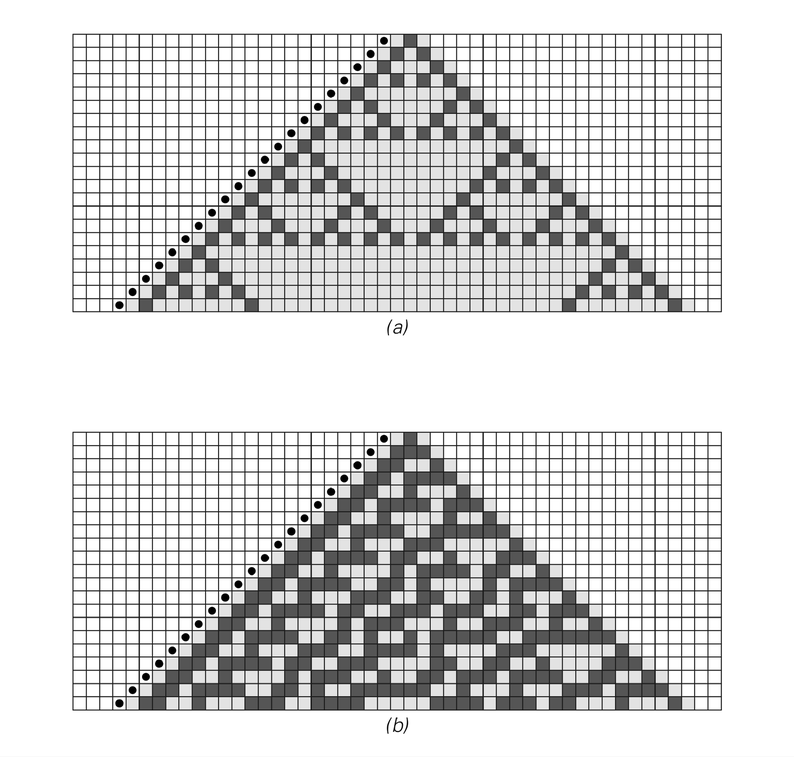Emulating Cellular Automata with Other Systems
In the previous section we discovered the rather remarkable fact that cellular automata can be set up to emulate an extremely wide range of other types of systems. But is this somehow a special feature of cellular automata, or do other systems also have similar capabilities?
In this section we will discover that in fact almost all of the systems that we considered in the previous section—and in Chapter 3—have the same capabilities. And indeed just as we showed that each of these various systems could be emulated by cellular automata, so now we will show that these systems can emulate cellular automata.
As a first example, the pictures below show how mobile automata can be set up to emulate cellular automata. The basic idea is to have the active cell in the mobile automaton sweep backwards and forwards, updating cells as it goes, in such a way that after each complete sweep it has effectively performed one step of cellular automaton evolution.
 |  |
Examples of mobile automata emulating cellular automata. In case (a) the rules for the mobile automaton are set up to emulate the rule 90 elementary cellular automaton; in case (b) they are set up to emulate rule 30. The pictures on the right are obtained by keeping only the steps indicated by arrows on the left, corresponding to times when the active cell in the mobile automaton is further to the left than it has ever been before. The mobile automata used here involve 7 possible colors for each cell.



